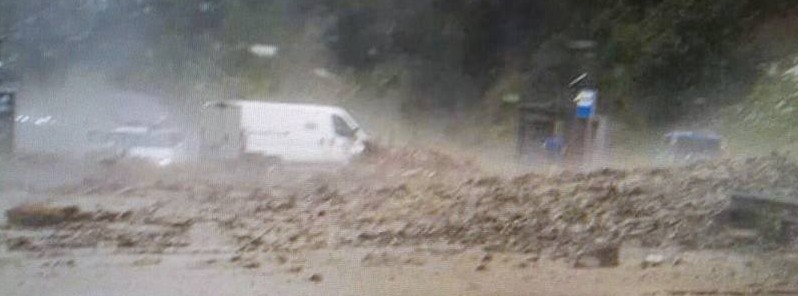Violent thunderstorm hits Italy after major heat wave, leaves 3 dead

Three people have lost their lives as violent storms hit northern Italy on Sunday, August 6, 2017, following a major heatwave across southern Europe which claimed at least 2 lives. Strong winds, very large hail and a huge number of lightning strikes were all part of this brief yet deadly severe weather event.
According to media reports, a 41-year-old Belgian man was among the dead after a tree fell on his tent at a summer camp in the Tramontina valley in the country's northeast. Another man was killed after a tree was uprooted by powerful winds and fell on a festival at Marzia in the Dolomites. The third casualty was a hiker who was fatally struck by lightning on a path up a mountain in the same area.
While Sunday's storms claimed 3 lives, another person died Saturday in the Cortina d'Ampezzo, northern Italy after a landslide buried her car.
The storms follow a major heat wave, dubbed "Lucifer" by Italian meteorologists, which broke numerous high-temperature records across the southeastern Europe. Romania reported two heat-related deaths. A 45-year-old man collapsed Friday, August 4 while working in a field in the northeast, while a 60-year-old man died of a heart attack in the street in an eastern port Thursday.
Violent storms such as the one on Sunday are not unusual after such intense heat waves, and, in fact, should be expected.
As reported by Severe Weather Europe, the extreme heat during the previous 7 – 10 days has resulted in extremely warm sea temperatures of Ligurian and Adriatic seas, locally up to 30 °C (86 °F). These warm seas are, in addition to the high evapotranspiration from the crops, the main source of high moisture and dew points available for fueling the storms.
Over the next 10 days, a more active pattern than what we have seen over the past 10 days will bring more temperature variability across the continent. The hot weather will move into SE Europe, where peak temperatures will remain at about 35 °C (95 °F) while a wave of cooler, more unsettled weather moves across western into central Europe. The cooler airmass will push also into the Iberian peninsula and the Mediterranean where cooler weather can be expected in the second half of the week. Both these regions will begin warming again after August 12.
The cold airmass will reach eastern and southeast Europe by August 13. After the cold front passage, the region will begin warming up again. The southern Iberian peninsula will be pushing towards 40 °C (104 °F) again by mid next week, north-central Italy towards 35 °C (95 °F) and southern Germany towards 30 °C (86 °F).
Featured image: Violent thunderstorm hits Italy on August 6, 2017. Credit: Meteo Dolomiti

Commenting rules and guidelines
We value the thoughts and opinions of our readers and welcome healthy discussions on our website. In order to maintain a respectful and positive community, we ask that all commenters follow these rules:
We reserve the right to remove any comments that violate these rules. By commenting on our website, you agree to abide by these guidelines. Thank you for helping to create a positive and welcoming environment for all.